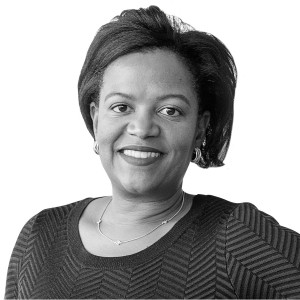Discovering My Roots in Haiti: Linda Dorcena Forry
The first Massachusetts state senator of Haitian descent returns to the island where her parents were born.

Photo courtesy of Suffolk construction
Linda Dorcena Forry
Suffolk Construction executive and former state senator
Number of Bostonians with Haitian Heritage: 23,614
Before my trip in 2015, I had been to Haiti only once before, when I was five years old with my parents and siblings. My only memory of the visit was hiking up the curving mountainside to get to my grandparents’ house in La Vallée-de-Jacmel, about two and a half hours south of Port-au-Prince. Because I was so little, my uncle carried me on his back through the steep, narrow pathways.
Our American story began when my parents emigrated from Haiti in the mid-1960s for better opportunities, and they found them: They bought a two-family Victorian home in Dorchester that they still live in today. It became a safe harbor where many of my relatives stayed until they acclimated to this new culture called Boston. I was born here at the former Boston City Hospital, but my parents spoke Haitian Creole at home, so it’s my first language. It always made me feel connected to my parents’ homeland. So four years ago, when I was the state senator for the 1st Suffolk District and then-Massport CEO Tom Glynn called and invited me to join JetBlue’s inaugural direct flight to Haiti, I couldn’t wait to buy a ticket and return to my roots.

Haiti’s mountainous landscape. / Photo via Getty/Petter Sandell
When I arrived, the people I met were incredible—full of possibility and pure joy. A lot of them were shocked that I spoke Haitian Creole because I’m American. I was like, “Well, of course I do!” My husband, Bill Forry, who is of Irish decent, and I had a wonderful time meeting with government officials and touring historical locations. As the first person of Haitian descent elected to the Massachusetts Senate, my goal was to figure out how to bring more of the diaspora to Haiti—an important task given that Massachusetts is home to one of the largest Haitian populations outside of Haiti.
On the last day of our trip, we visited the Moulin Sur Mer Beach Resort located on the same former sugar plantation as the Musée Ogier-Fombrun, which showcases Haitian architecture and artifacts. Outside the museum is a replica of a historical statue, called Neg Mawon in Haitian Creole and Black Maroon in English, that stood in the heart of Port-au-Prince and represents the slave revolution and independence of 1804. Bill and I had a chance to meet Gérard Fombrun, the owner of the resort and museum, who took us on a boat excursion to a sandbar in the middle of the ocean. It was so amazing, even though I was petrified of sharks!
Do I think I’ll ever go back again? Yes, one day we will return. My four children are a blend of cultures: black, Haitian, and Irish. This year, we took them to Ireland. They met their cousins and saw where their grandparents were raised. We definitely want to do a family reunion back in Haiti soon. —As told to Brittany Jasnoff
Source, Boston population numbers: census bureau 2013–2017 american community survey (five-year estimates)
Read more: The Ultimate Guide to Planning Your Heritage Travel Journey


